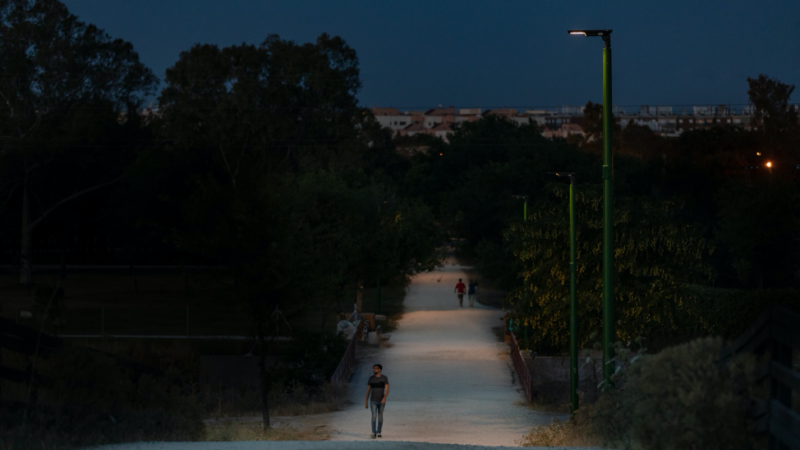Solar power plays an important role in the fight against climate change.
While global access to electricity has been rising, there are still 940 million people off the grid; solar technology can help more people access cheap, portable, and clean power to alleviate poverty and increase quality of life.
But it can also enable developed countries and those who are the largest consumers of fossil fuels, to transition to sustainable alternatives.
Signify, formerly Philips Lighting, has noticed the need for creative new methods to increase access to electricity while reducing energy consumption, and is leading the way in advancing solar-powered lights.
In India, the company launched Philips LifeLight, a portable solar-powered lantern specifically designed for regions with limited access to electricity.
“Lack of light after dark is the single largest factor making women feel unsafe in their communities,” said Prajna Khanna, who heads up CSR at Signify.
“Introducing the LifeLight to off-grid areas is helping transform the lives of people in these communities. It extends their day for commercial activity, education, and the community life,” she added.
This has been further complemented by the installation of approximately 84,000 solar streetlights in the country to help local people feel safer and more connected.
By 2050 – when the world must be climate neutral – additional infrastructure will be built for another 2 billion people.
Now is the time for emerging economies to leapfrog into smarter technologies, bypassing carbon-intensive choices, for cleaner more reliable zero carbon energy sources.
Improving Lives
In the North Indian state of Haryana, Signify recently teamed up with the SRF foundation, a NGO that champions quality education, to provide young people with the means to practice sport.
In the first phase, the project lit five badminton courts with high-mast solar LEDs. This has benefited the physical health, confidence, and sporting ability of 1,200 school children who, before the project, were restricted to lunch breaks to practice badminton.
As well as the longer-term projects, solar power is also an efficient lighting solution for immediate need and emergency relief.
BRAC, the world’s largest NGO, partnered with Signify to distribute LifeLight solar lanterns to more than 46,000 Rohingya families in Bangladesh’s refugee camps – this will help improve quality of life by supporting basic needs.
“These clean solar powered lights will make the camps a much safer place at night, and are, therefore, making a much-needed contribution to the lives of people who are spending days in unimaginable difficulties,” said Asif Saleh, senior director of Strategy, Communication and Empowerment at BRAC and BRAC International.
As lighting can only have a long-term positive impact on communities if the skills needed to maintain these technologies are provided, the Signify Foundation gives technical training to members of remote communities as well as helping with entrepreneurial development to encourage the sustainability of green ventures.
Advances in technology
Solar lighting should also be encouraged in the global North.
In the Spanish city of Seville, Signify has installed 20 solar street lights in response to the rise of visitors heading to the park at night.
The luminaire, the Philips SunStay, consists of a photovoltaic panel, a charge controller, a battery, and the LED light in one compact housing unit making it easy to install and maintain – there’s no need for any type of cabling and the unit doesn’t need an electrical mains connection either.
A motion sensor, which detects movement and increases or decreases the intensity of the light accordingly, promotes energy efficiency, which is an important tool in combatting climate change.
More recently, Signify has been experimenting with hybrid solar systems.
The Philips Combo Charge Controller enables streetlights to be powered by clean solar electricity while accessing the mains grid if the battery runs out of power.
This makes hybrid a feasible option for high-latitude countries where sunshine may be less reliable, and daylight is more dependent on the seasons.
Ultimately, a paradigm shift is occurring where solar power is no longer being attributed only to places where existing infrastructure lacks and instead is being seen as an important part of the global energy mix – the alternative is becoming the new norm.
This post was sponsored by Signify. See our editorial guidelines for what this means.
